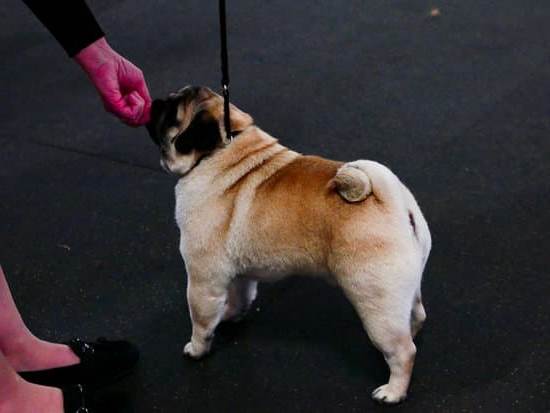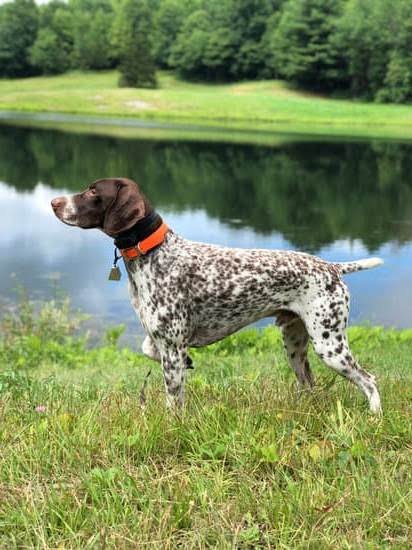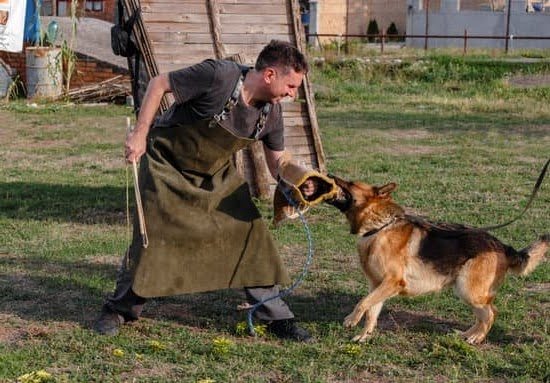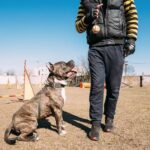Are you interested in learning how to train a deer indicator dog? These valuable canines play a crucial role in hunting and conservation efforts, helping to track and locate deer for various purposes.
From choosing the right breed to advanced tracking techniques, this article will provide a comprehensive guide on training a deer indicator dog. Whether you are a hunter or wildlife enthusiast, understanding the role of these dogs and the training process is essential for their success in the field.
Training a deer indicator dog requires patience, dedication, and specialized knowledge. In this section, we will explore the important factors to consider when training these dogs, including their natural instincts and abilities that make them effective at tracking deer. By gaining insights into their role and capabilities, you can better understand the training process and prepare for the unique challenges involved.
Throughout this article, we will cover topics such as basic obedience training, scent introduction, advanced tracking techniques, field training, handling challenges, and maintaining skills. Each of these aspects plays a significant role in developing a well-trained deer indicator dog that can contribute to successful hunting and conservation efforts. So let’s delve into the world of training these remarkable canine companions and unlock their full potential in tracking deer.
Choosing the Right Breed
When it comes to training a deer indicator dog, it’s crucial to start with the right breed. Not all dogs are suited for this specialized task, so it’s important to carefully consider the characteristics and traits of a potential deer indicator dog before beginning the training process.
Characteristics to Look For
The ideal deer indicator dog should possess certain physical and behavioral traits that make them well-suited for tracking and scent detection. Physically, they should have a strong sense of smell, endurance for long periods of walking and running, and an agile build that allows them to navigate through various terrains. Behaviorally, they should be responsive to training, have a strong work drive, and be able to focus on tasks even in distracting environments.
Choosing the Right Breed
Breeds such as Labrador Retrievers, Bloodhounds, German Shorthaired Pointers, and Blue Tick Coonhounds are often considered excellent choices for deer indicator dogs due to their natural tracking abilities and strong sense of smell. It’s important to research each breed thoroughly and consider how their specific traits align with the requirements of deer tracking.
Evaluating Individual Dogs
While breed characteristics can provide a general guide for choosing a deer indicator dog, it’s equally important to evaluate individual dogs based on their temperament and aptitude for tracking. Some dogs within a particular breed may excel at scent detection and tracking, while others may not possess the same level of ability.
When selecting a dog for training as a deer indicator dog, it’s essential to observe their behavior around scents and their willingness to engage in tracking activities.
By carefully considering these characteristics and traits when choosing a breed and evaluating individual dogs, you can set your training process up for success when working on how to train a deer indicator dog.
Basic Obedience Training
Basic obedience training is the crucial first step in preparing a deer indicator dog for tracking. This initial training sets the foundation for all future tracking and hunting skills. The primary goal of basic obedience training is to establish a strong bond between the handler and the dog, while also teaching essential commands that will be used during tracking.
To start, it’s important to focus on basic commands such as sit, stay, come, and heel. These commands are not only useful during tracking but also in everyday situations. Positive reinforcement techniques, such as using treats and praise, can be highly effective in encouraging the dog to follow commands consistently.
It’s also important to socialize the deer indicator dog during this phase of training. Exposing the dog to different environments, people, and animals will help reduce anxiety and build confidence. This can ultimately lead to better performance when the dog is out in the field tracking deer.
As part of basic obedience training, it’s crucial to introduce leash manners and proper behavior around distractions. The ability to maintain focus amidst various stimuli will be essential during actual tracking scenarios. Teaching the dog to remain calm and obedient in different environments will ultimately contribute to its success as a deer indicator dog.
| Training Stage | Description |
|---|---|
| Basic Commands | Teaching essential commands like sit, stay, come, and heel through positive reinforcement techniques. |
| Socialization | Exposing the dog to different environments, people, and animals to reduce anxiety and build confidence. |
| Leash Manners | Introducing proper behavior around distractions and teaching the dog to remain calm and obedient. |
Introducing Scent
One of the most crucial aspects of training a deer indicator dog is to teach them how to recognize and follow deer scent. This is a fundamental skill that forms the basis of their tracking abilities. Here are some essential steps and methods for introducing scent to your deer indicator dog:
1. Scent Introduction: Start by exposing your dog to deer scent in a controlled environment. You can use deer antlers or hides with fresh scent to familiarize the dog with the smell. Allow the dog to sniff and investigate the scent, associating it with positive reinforcement such as treats or praise.
2. Scent Trails: Create simple scent trails for your dog to follow using deer scent drags or scent-infused materials. Begin with short, straight trails and gradually increase the length and complexity as the dog becomes more adept at following the trail.
3. Scent Discrimination: Teach your deer indicator dog to differentiate between different scents, focusing specifically on deer scent. Use various distractions or competing scents during training sessions to challenge the dog’s ability to stay focused on following the correct trail.
It is important to be patient and consistent when introducing scent to your deer indicator dog. Each training session should be kept short and enjoyable for the dog, reinforcing positive behavior and progress. With time and practice, your dog will develop a keen sense of smell and a strong ability to track deer scent effectively in real-life hunting scenarios.
Advanced Tracking Techniques
Understanding the Importance of Differentiating Between Old and Fresh Deer Trails
Being able to differentiate between old and fresh deer trails is crucial for a deer indicator dog. Fresh trails indicate recent deer activity and are more likely to lead to a successful hunt, while old trails may no longer be relevant. Training your dog to understand this difference can significantly improve its effectiveness as a deer tracker.
Teaching the Dog to Recognize Aging Scent
One of the key aspects of advanced tracking techniques is teaching the dog to recognize aging scent. Dogs have an incredible sense of smell, but it is essential to train them to understand that fresher scents are stronger and more recent, while older scents may be fainter and less relevant. This can be done by using scent pads with varying levels of freshness and teaching the dog to identify and differentiate between them.
Simulating Realistic Scenarios for Training
To truly train a deer indicator dog to differentiate between old and fresh deer trails, it is important to simulate realistic scenarios during training sessions. This can involve setting up mock trails and exposing the dog to different environmental conditions that affect scent dispersion. By providing varied training experiences, you can help your dog become adept at discerning the age of a trail in diverse hunting environments.
Training a deer indicator dog to recognize and follow fresh deer trails while disregarding old ones takes time, patience, and consistency. By incorporating these advanced tracking techniques into your training regimen, you can enhance your dog’s ability to effectively track deer in real hunting situations.
Field Training
Once your deer indicator dog has mastered the basic obedience training and has started to recognize and follow deer scent, it’s time to expose them to real-life tracking scenarios in the field. This phase of training is crucial in honing your dog’s tracking skills and preparing them for actual hunting or conservation work.
During field training, it’s important to replicate different environmental conditions and terrain that your dog may encounter during actual tracking. This includes wooded areas, fields, and varying weather conditions. By exposing your dog to these diverse environments, you are helping them develop the ability to track deer across different types of landscapes.
One effective way to conduct field training is by using simulated deer trails or tracks laid out by trainers. This allows the dog to practice following fresh scent trails in a controlled environment before transitioning to unassisted tracking in real hunting or conservation settings. Additionally, introducing distractions such as other animal scents or human interference during training can help prepare the dog for potential challenges they may face in the field.
The goal of field training is not just to teach the dog how to track a deer but also to build their endurance and stamina for prolonged tracking sessions. Typically, this phase of training requires patience and persistence from both the trainer and the dog. It’s essential to start with short tracking sessions and gradually increase the duration as the dog gains experience and confidence in their tracking abilities.
| Training Techniques | Example |
|---|---|
| Simulated deer trails | Laying out tracks for the dog to follow |
| Introducing distractions | Using other animal scents during training |
| Endurance building | Gradually increasing tracking session duration |
Handling Challenges
Deer indicator dogs are valuable assets in hunting and conservation efforts, as they play a vital role in tracking and locating deer. However, the training process is not without its challenges, as the dogs must learn to navigate distractions and overcome obstacles while on the trail of a deer. In this section, we will discuss how to train a deer indicator dog to handle these challenges effectively.
One of the key aspects of training a deer indicator dog to deal with distractions is desensitization. This involves exposing the dog to various stimuli that it may encounter in the field, such as other animals, different terrains, and environmental factors. By gradually introducing these distractions during training sessions, the dog can become more accustomed to them and learn to stay focused on tracking despite the surrounding distractions.
Additionally, teaching the dog impulse control is crucial for dealing with obstacles during tracking. This involves training the dog to remain calm and composed when faced with barriers or difficult terrain while on the trail of a deer. Through consistent reinforcement and positive reinforcement techniques, the dog can learn to approach obstacles calmly and navigate through them without losing sight of its objective.
Another important aspect of handling challenges during tracking is maintaining clear communication between the handler and the dog. Training the dog to respond promptly to commands and signals can help prevent distractions from derailing its focus on tracking deer scent. This also includes building trust between the handler and the dog so that they can work together seamlessly in navigating through any obstacles encountered during tracking.
By incorporating desensitization, impulse control, and effective communication into their training regimen, handlers can prepare deer indicator dogs to handle distractions and obstacles confidently while on the trail of deer. With patience, consistency, and proper training techniques, these challenges can be overcome, allowing deer indicator dogs to fulfill their crucial role in hunting and conservation efforts effectively.
Maintaining Skills
Once you have successfully trained your deer indicator dog to recognize and follow deer scent, it is crucial to continuously practice and refine their skills. This ongoing training is essential in ensuring that your dog remains proficient in tracking deer and can effectively differentiate between old and fresh trails. Here are some tips on how to maintain your deer indicator dog’s abilities:
- Regular Practice Sessions: Schedule regular training sessions with your deer indicator dog to keep their tracking skills sharp. These sessions can include simulated tracking scenarios or actual field exercises in a controlled environment.
- Use of Distractions: Introduce distractions during training sessions to challenge your dog’s abilities. By adding elements such as other scents or obstacles, you can test and improve your dog’s focus and determination in following the correct trail.
- Refinement of Skills: Continuously work on refining your dog’s ability to differentiate between old and fresh trails. Practice exposing them to various ages of deer scent to ensure they remain adept at tracking even the faintest trails.
In addition to regular training sessions, it is important to expose your deer indicator dog to real-life hunting scenarios. Taking them on hunting trips or conservation efforts will provide valuable experience and keep their skills honed for actual field work. It is also crucial to stay up-to-date with new techniques and methodologies for training deer indicator dogs by attending workshops or seeking advice from experienced trainers.
Remember, maintaining the skills of your deer indicator dog requires dedication and consistency. By continuously practicing and refining their abilities, you can ensure that your dog remains an invaluable asset in hunting and conservation efforts.
Conclusion
In conclusion, the role of a well-trained deer indicator dog is crucial in both hunting and conservation efforts. These specially trained dogs play a significant role in helping hunters locate and retrieve wounded or fallen deer, ensuring that no animal goes to waste. Additionally, their ability to differentiate between old and fresh trails can aid in deer population management and conservation efforts.
Training a deer indicator dog requires dedication, patience, and commitment. The process involves choosing the right breed with the necessary characteristics and traits, providing basic obedience training as a foundation for tracking, introducing scent recognition, and advanced tracking techniques. Field training is essential to expose the dog to real-life tracking scenarios and challenges.
It is important for those interested in training a deer indicator dog to understand the commitment that comes with it. Continuous practice and refinement of the dog’s abilities are essential to maintain its skills.
By investing time and effort into properly training these dogs, hunters can contribute to ethical hunting practices and wildlife conservation efforts. By learning how to train a deer indicator dog effectively, one can ensure that these animals are valuable assets for both hunting and conservation purposes.
Frequently Asked Questions
How Do You Train a Deer Dog?
Training a deer dog involves teaching it to track and follow the scent of deer. It requires patience, consistency, and positive reinforcement. Introducing the dog to deer scent and gradually increasing difficulty is key.
How Do I Train My Dog to Track Deer?
To train your dog to track deer, start by introducing it to the scent of deer in a controlled environment. Use deer scent trails and reward your dog for following them. Gradually increase the difficulty of the trails as your dog progresses.
What Age Should You Start Training a Dog to Track Deer?
It is important to start training a dog to track deer at a young age, ideally around 6-9 months old when they are still receptive to learning new skills. However, older dogs can also be trained with patience and consistency.

Welcome to the blog! I am a professional dog trainer and have been working with dogs for many years. In this blog, I will be discussing various topics related to dog training, including tips, tricks, and advice. I hope you find this information helpful and informative. Thanks for reading!





